- Home
- >
- Preservation Archaeology Blog
- >
- Preserving the Ray Robinson Collection: Avocationa...
Paper presented at the 2024 Pecos Conference, August 2, 2024.
Abstract
In 2015, the Arizona State Museum accessioned the Ray Robinson Collection—an acquisition made possible by Northern Arizona University and Archaeology Southwest with support from the Smith Living Trust. The collection, consisting of over 250 large boxes from Ray’s preservation activities during the 1950s and 1960s, has been a seven-year labor of respect and learning by a team of dedicated avocational researchers.
Since 2017, this team has committed 20 to 40 hours per week to the project, which includes washing and sorting, ceramic typological analysis, preparing obsidian artifacts for sourcing, rehousing, and meticulous data collection for sites Ray visited in southeastern and south-central Arizona. The focus of this paper is to celebrate the achievements of the Robinson Project Team and their efforts to preserve this important assemblage, making it accessible to future researchers.
Robinson Collection Fact Sheet (PDF download)
Introduction
“This is just a looter’s collection.”
“There is nothing there.”
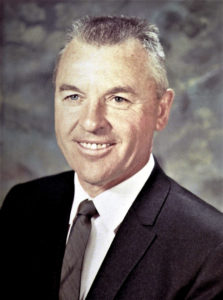
These are just a couple of several disparaging comments that were made about Ray Robinson’s collection when our project started in 2017 after Ray had preserved this collection for over 60 years. We are so proud that the Robinson Project Team has proven these statements to be wrong and that now, after seven years of dedication and perseverance, the Robinson assemblage is finally being accepted as an important part of southeastern Arizona’s archaeological record. The preeminent archaeologist and director emeritus of the Arizona State Museum (ASM), Ray Thompson, had high praise for famous avocationalist and collector Norton Allen (Lizarraga 2015, Lyons 2010). I know Dr. Thompson would be happy with our team’s efforts to help preserve the Robinson Collection.
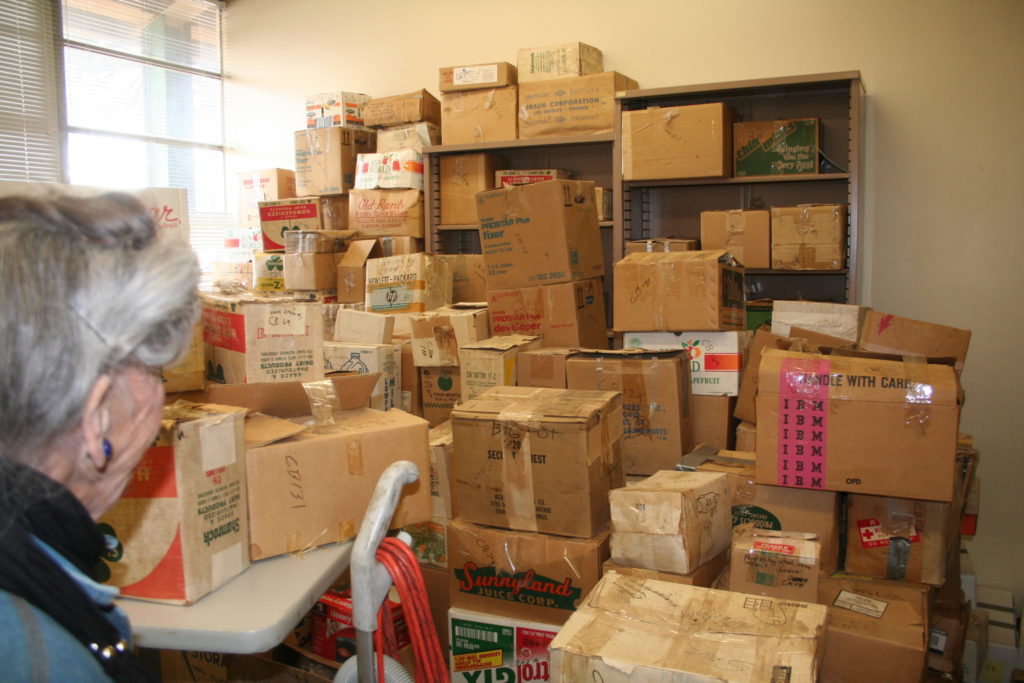
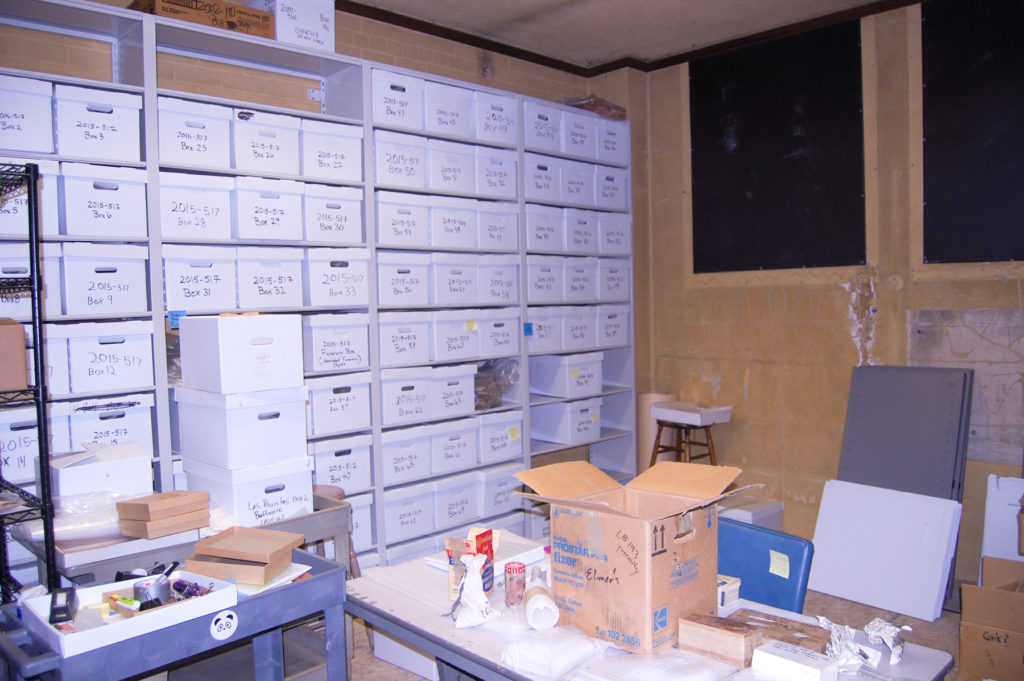
The Robinson Project Team
Our discussion presented here is not about the collection itself—we have five SAA papers (Smith et al. 2018, Smith and Clark 2021, 2022, 2023, 2024) that discuss the team’s results over the past seven years, with at least another four papers in the queue as we move forward. Our goal in this paper is to highlight the Robinson Project Team and celebrate what we have accomplished through some occasionally difficult circumstances.
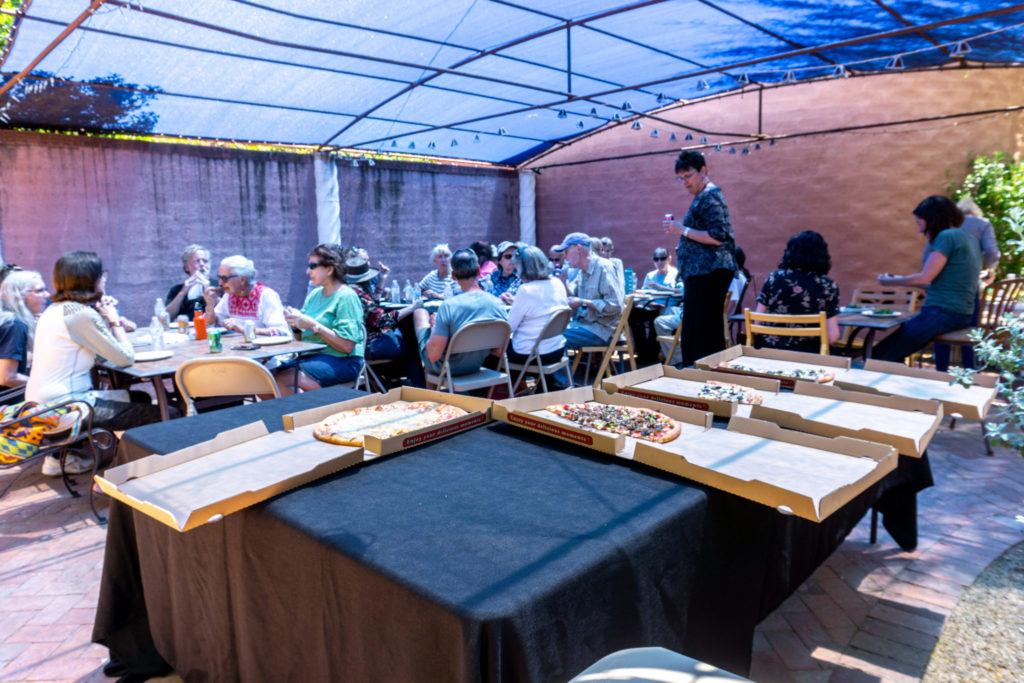
The Robinson Project started with community engagement across Arizona, with word about the volunteer opportunity spreading rapidly across the Southwest. Originally, more than 35 volunteers participated, coming as far away as Colorado, some making a twice-weekly commute from the Phoenix and Central Valley areas. (If that isn’t dedication, we don’t know what it is!)
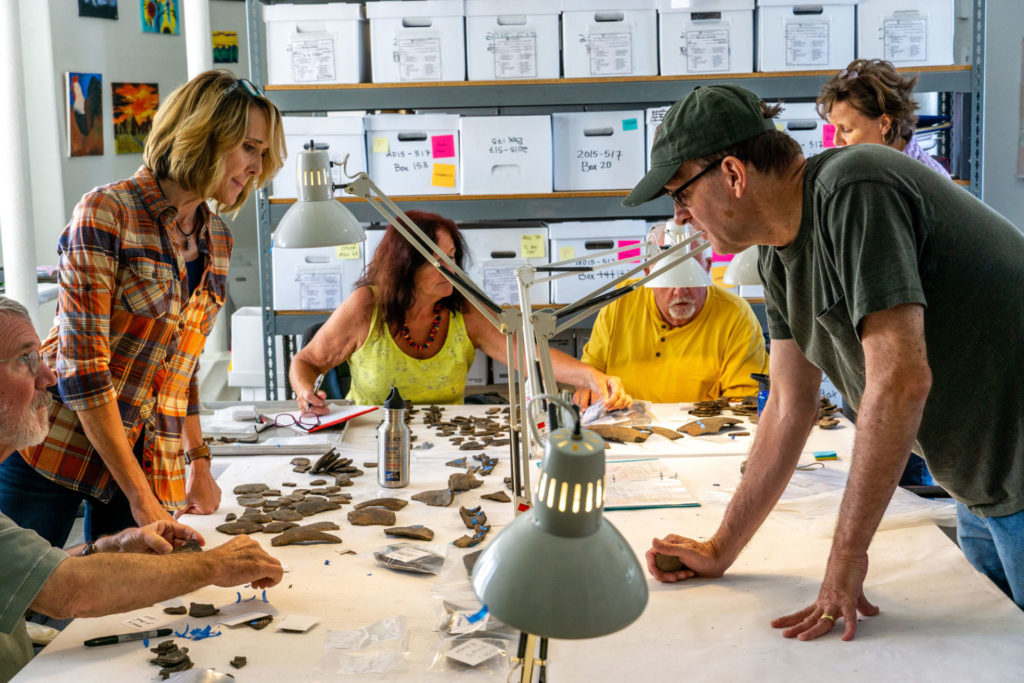
The team puts up with some very uncomfortable conditions—washing artifacts outside in all sorts of weather—more closely related to field artifact processing. We had a donor who provided a propane heat lamp for us to huddle under and warm up our wet hands and bodies during cold mornings. Conditions in the lab were not optimum in the 100-year-old building and a room that used to be an upstairs swimming pool. The Team should receive merit badges for every time someone tripped over uneven floor coverings and electrical extension cords.
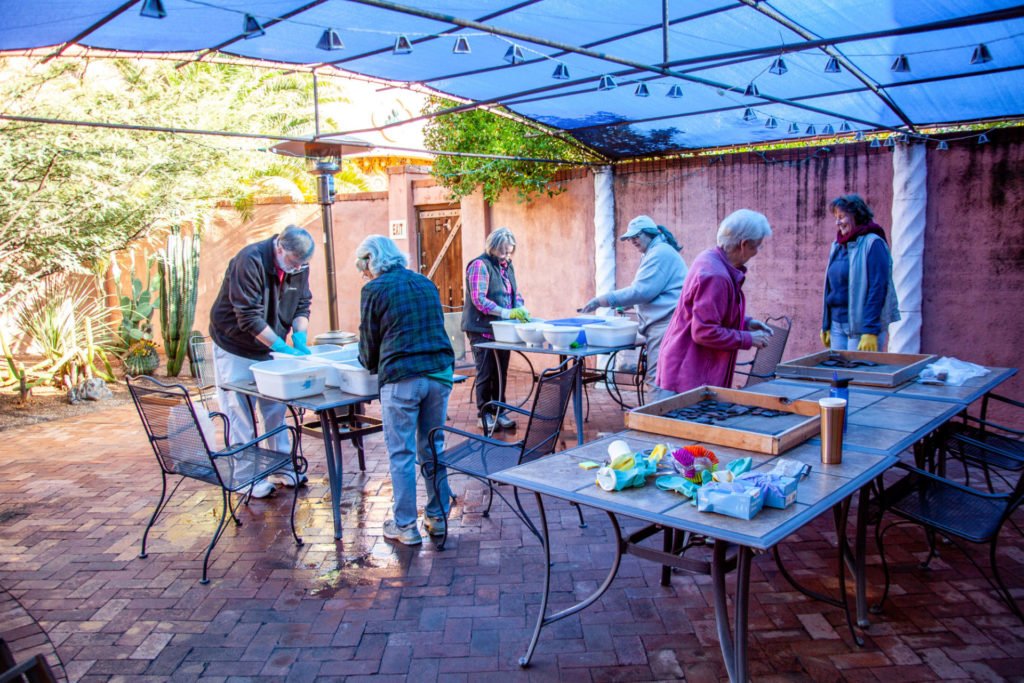
For a while, there was no light except that provided by windows, until that was rectified by a donor who loaned us clamp-on desk lamps for the team’s use that sometimes mysteriously disappeared. Our team took responsibility for picking up boxes from the repository, transporting the boxes upstairs via an ancient freight elevator, then back again when the boxes were processed and ready to be returned. It is hard work—occasionally a little too much for some volunteers.
A couple of years ago it was decided that the Robinson Team should reduce itself to a core group of six avocational researchers, with Jeff Clark continuing as our advisor. Most of the team had been with the program since inception, and it was a joy to have a new member join us to get us all excited again with his enthusiasm and passion for the tasks at hand.
Robinson Artifact Photography
We would be amiss if we did not recognize our team’s photographer extraordinaire, Lance Trask. Lance is a professional archaeologist and most recently a volunteer himself on numerous rock imagery projects. Lance’s photos of appropriate non-funerary artifacts are just breathtaking. Lance, along with his wife Sandra, have brought the Robinson collection to life again through their photography, and there is no way to thank them enough.
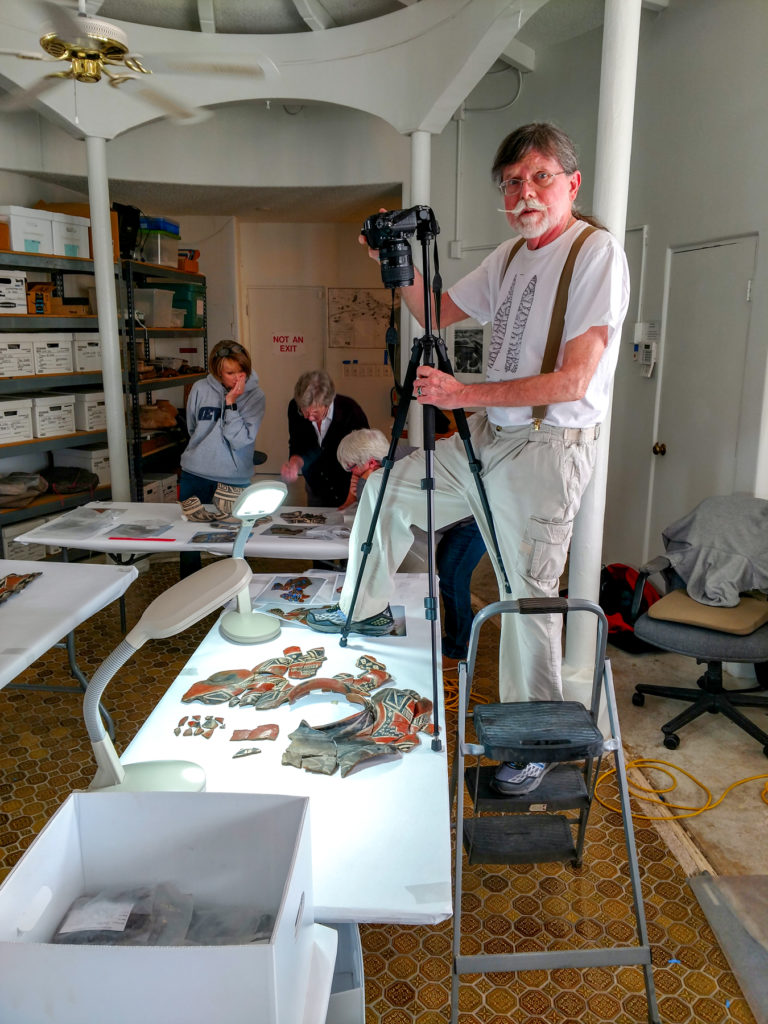
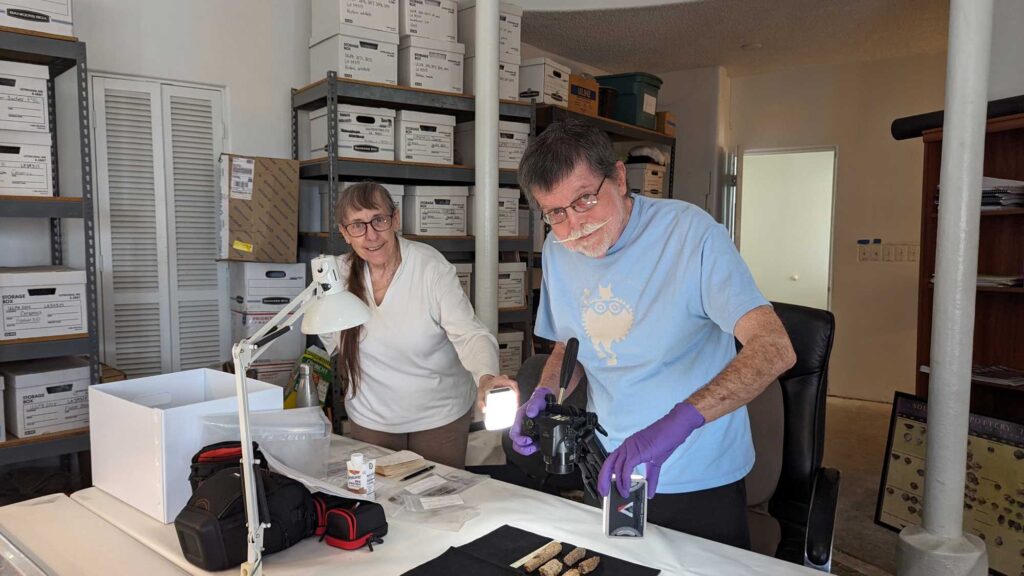
Current Project Status
During the last couple of years, the team has been finishing up the bulk materials inventory, including a substantial amount of lithics (flaked stone tools and the debris from making them), reviewing and conducting preliminary research on the perishable assemblage (yes, there are sandals from southern Arizona), and respectfully reviewing the associated funerary objects to complete the database.
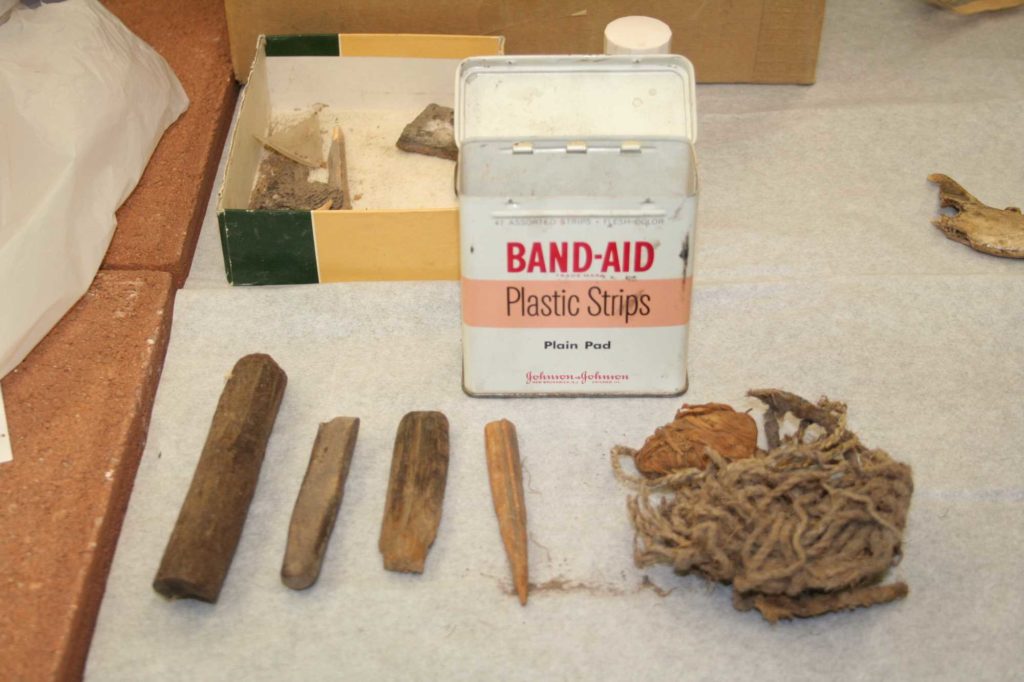
The team is currently taking a second look at the Salado sites of Cork and Elmer’s Farm in the poorly documented Safford Basin in southeastern Arizona, and with what we have learned previously and with Jeff Clark’s guidance and Desert Archaeology’s ceramists’ assistance, we are revising the original ceramic typologies for these sites.
We are also known (to ourselves, at least) as the Blue Tape Crew—on advice from Nancy Odegaard (Curator emerita, Arizona State Museum), we mark our vessel conjoins with small pieces of blue painters’ tape to be removed before rehousing. All of us have pieces of blue tape at home—in our laundry machines, in our cars, on our shoes, in our hair—it is everywhere! But each piece of blue tape we find brings us joy to think about the great people we get work with on the Team and that special vessel that will never leave our memory because we assisted with bringing it back to its former state.
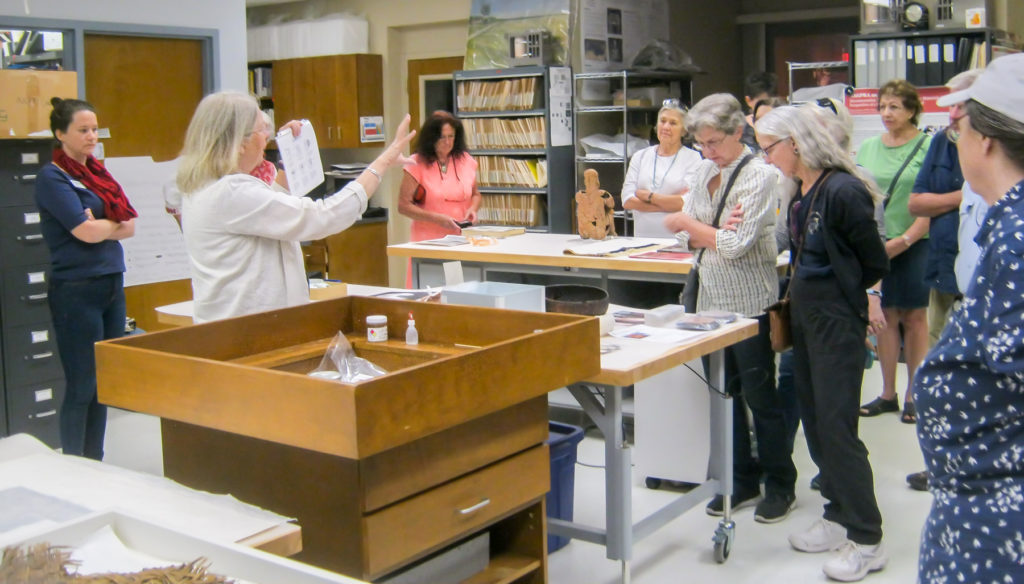
It has been a long seven-year journey, but one that we wouldn’t have missed for the world. We anticipate the hands-on inventory to be completed by years’ end. It is a sad time for some, as our future as a team is uncertain at this point.
Personal Thoughts from Robinson Project Team Members
“This has been the most enjoyable learning experience I think I’ve ever had. Along with a vocabulary expansion, I have a much better understanding of SW Archaeology and geology as it relates to Indigenous populations. I was humbled when a Native American graduate student thanked me for what we were doing.”
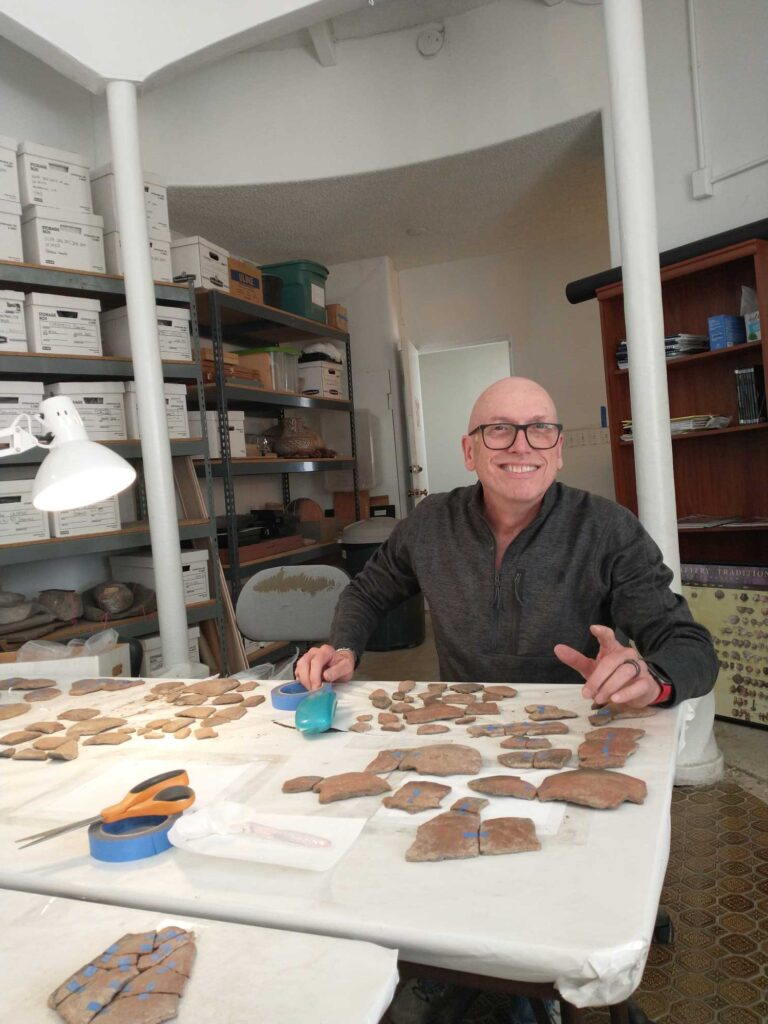
“One of the best learning experiences I’ve had. Learned more types of ceramics (have a new love—Tularosa Fillet Rim), got to practice drawing, saw and learned about artifacts and techniques I would not have a chance to see or know about otherwise, and got to practice describing an artifact as completely as possible in a very few words, in a clear manner. I have met and enjoyed fun times with people who have become friends, not just co-workers. From now on, a place without blue tape is just not complete!”
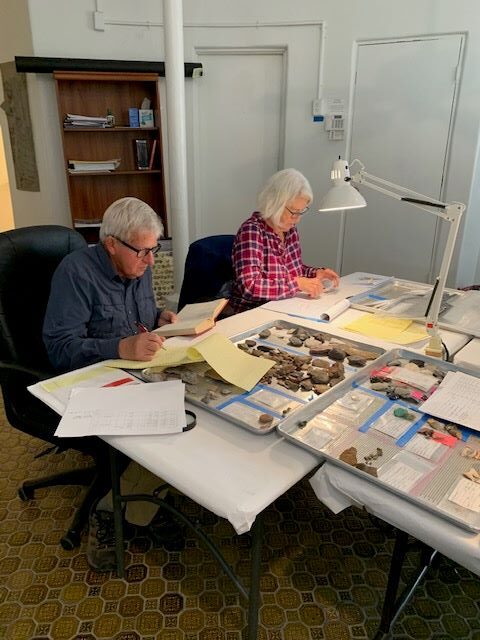
“Refitting potsherds is a metaphor for our work and for the general work of archaeology. Archaeology attempts to find and ‘refit’ the bits and pieces of knowledge into a wider understanding of the Indigenous peoples who lived in what is now our home landscape. Like the Robinson Project, archaeology can never fully succeed in understanding past cultures, but it is the work of archaeology to find pieces and to continually seek a better understanding of the world and people who were here before us…I sometimes feel that I’ve added a crumb of information about those people to the current knowledge.”
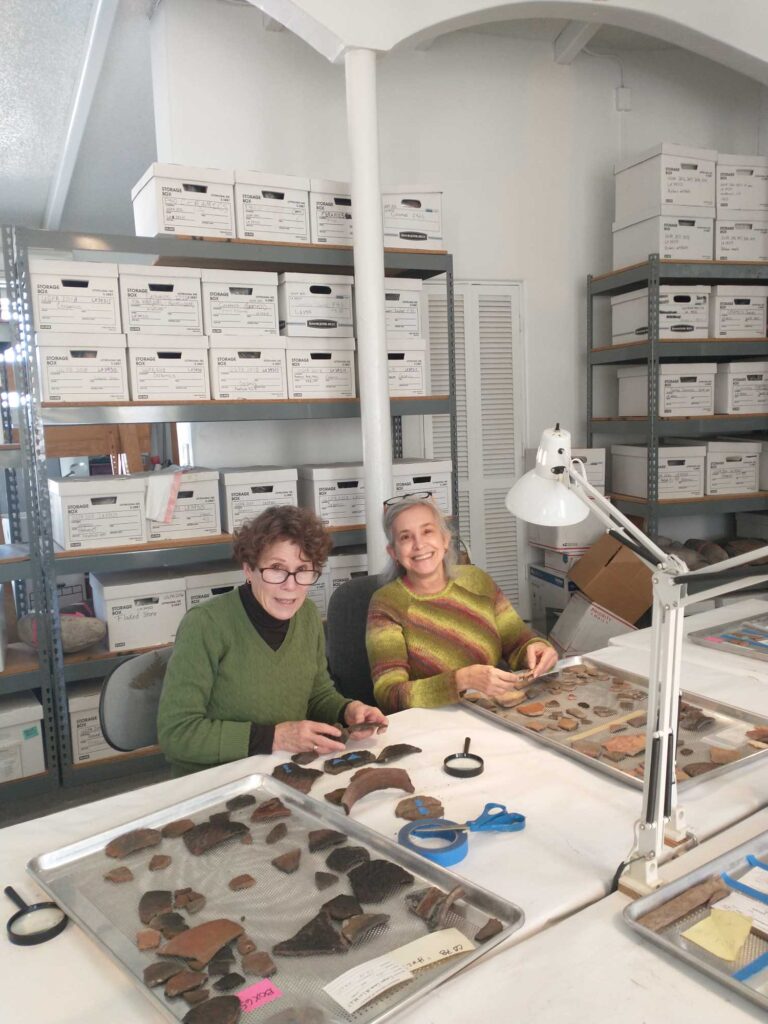
Conclusion
Yes, Ray Robinson was a collector, as described by Dr. Thompson, but he was also passionate about preservation and research as expressed in his journals and notes; he felt it an obligation to rescue these artifacts before their original resting places were destroyed due to mining and agricultural activities, as well as urban expansion. Ray felt he must find a good home for these items before he passed, and with the help of Kelley Hays-Gilpin and Chris Downum at Northern Arizona University, Archaeology Southwest, ASM, and the Smith Living Trust, he accomplished this goal before his death at age 101.
The Robinson Project Team has turned this collection from a disorganized mound of cardboard and wooden boxes stored in a garage to a fully inventoried archived collection, with a complete searchable database to accompany it. The team has come to know Ray through his journals and to respect what he was trying to accomplish in 1950s and ’60s, even though perhaps some of his actions would not be acceptable today.
As we enter the twilight of the project, we are fulfilled knowing we did a good job, with the results of our team’s efforts providing a wealth of information for future professional researchers.
Onward!
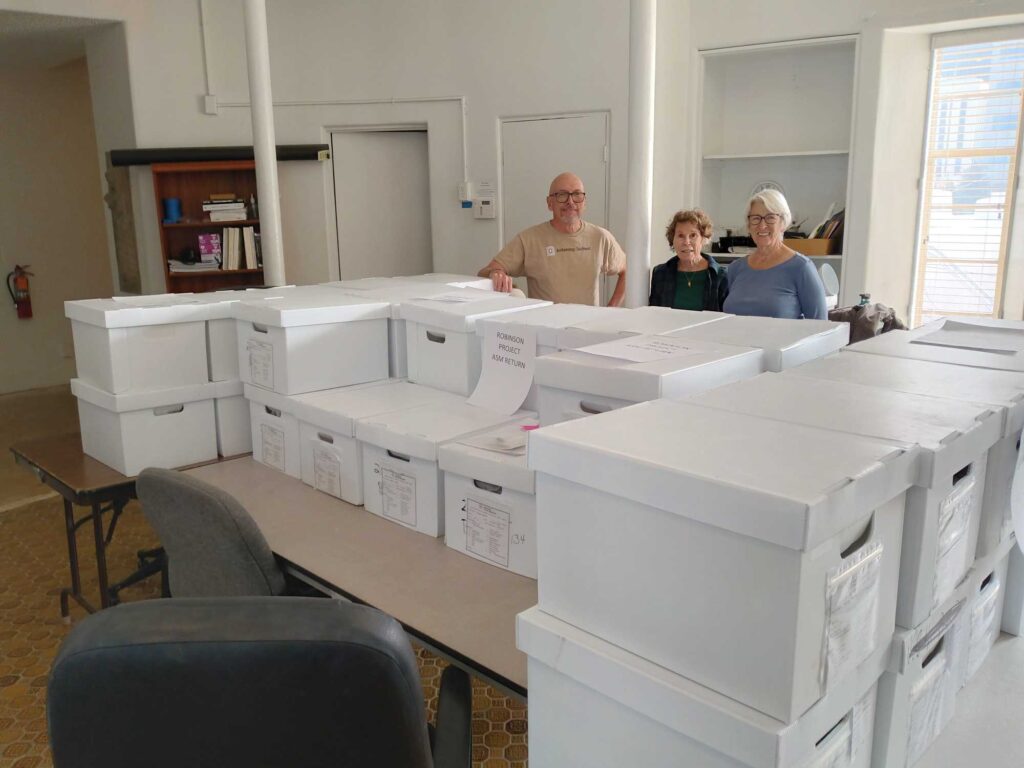
Acknowledgements
2024 Robinson Project Sessions Volunteer Researchers
Joyce Clarke, Valerie Freireich-Kaplan, Mary Graham, Phillip Hunger, Harlow Sires, and Jaye Smith; Lance Trask—Photographer
Archaeology Southwest
Jeff Clark, Sara Anderson
Support from the Smith Living Trust Fund for Site Protection in memory of William T. Lawrence
Arizona State Museum at the University of Arizona
Kathryn (Katie) MacFarland, Katherine Dungan, Benjamin Bellorado, and Repository staff and interns
Northern Arizona University
Kelley Hays-Gilpin, Chris Downum
Desert Archaeology, Inc.
Sarah Herr, Chris Lange, Jim Heidke, Leslie Aragon, Jim Vint, Mike Diehl
Independent Researchers
Joseph Bryce, Joseph Crary
References
Lizarraga, Darlene, 2015. Arizona’s Famous Pot Hunters. Glyphs Vol. 66, No. 6, Arizona Archaeological and Historical Society, Tucson.
Lyons, Patrick D., 2010. Norton Allen’s Excavations in the San Pedro and Dripping Spring Valleys of Southeastern Arizona.” Journal of the Southwest, vol. 52, no. 2/3, 2010, pp. 323–61.
Smith, Jaye, Linda Pierce, Kelley Hays-Gilpin, Christian E. Downum, 2018. The Raymond F. Robinson Collection: A Successful Collaboration to Save Safford Basin Archaeological Artifacts. Presented at the 83rd Annual Meeting, Society for American Archaeology.
Smith, Jaye and Jeffery J. Clark, 2021. Citizen Science in Action: Preserving the Ray Robinson Collection from the Safford Basin, Arizona. Presented at the 86th Annual Meeting, Society for American Archaeology.
Smith, Jaye and Jeffery J. Clark, 2022. Continued Preliminary Research on the Ray Robinson Collection: the Elmers Farm and Layton Field Sites in the Eastern Safford Basin of Arizona. Presented at the 87th Annual Meeting, Society for American Archaeology.
Smith, Jaye and Jeffery J. Clark, 2023. Continued Work on the Ray Robinson Collection: Four Salado Sites in the Northern San Pedro Valley Region of Southeastern Arizona. Presented at the 88th Annual Meeting, Society for American Archaeology.
Smith, Jaye and Jeffery J. Clark, 2024. Continued Work on the Ray Robinson Collection: Preliminary Investigations into the Clont’s Farm site, John’s Farm site and other nearby sites in the Safford Basin of Southeastern Arizona. Presented at the 89th Annual Meeting, Society for American Archaeology.
One thought on “Preserving the Ray Robinson Collection: Avocational Efforts in Preservation and Research”
Comments are closed.
Incredible, beautifully orchestrated teamwork to make an invaluable contribution! 1000 thanks to all involved.